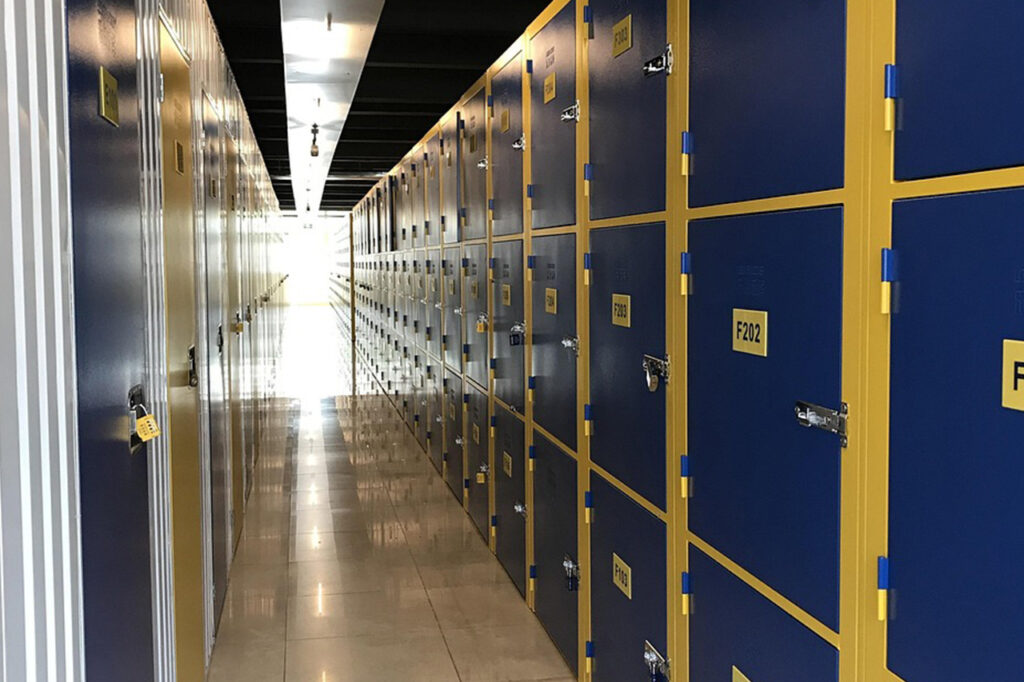Metal buildings are known for their exceptional adaptability and strength, with portal frame construction standing out as a key design feature. This method creates interiors that are wide and unobstructed, providing a clear span without the interference of internal columns.
The result is an open layout that can be tailored for numerous purposes, offering ample space for equipment, personnel, and storage. These qualities make metal buildings an ideal choice for both industrial and commercial applications.
In a workshop setting, the ability to arrange machinery and workstations freely allows for optimal workflow and safety. Large tools and vehicles can be accommodated easily, and the floor space can be organized according to the specific needs of the operation. This flexibility reduces congestion, supports operational efficiency, and allows for seamless integration of new equipment when needed. A layout free from structural obstructions also improves accessibility and maneuverability within the building.
Warehouse operations also benefit immensely from open layouts. Storage racks and systems can be installed with maximum efficiency, allowing high-density inventory storage while still maintaining clear pathways for forklifts and personnel. The tall, wide spaces typical of metal buildings permit the use of vertical storage solutions, significantly increasing capacity without expanding the building’s footprint. This adaptability ensures that the building can support the growth of operations over time.
Strategic Layout Planning
Maximizing the utility of a metal building begins with a thorough and strategic approach to layout planning. Understanding the core functions that will take place inside the space is the first step in ensuring an efficient environment. Every activity, from production to administration, should be mapped out with its spatial requirements clearly identified. This planning phase is crucial for balancing utility and accessibility throughout the structure.
Dividing the space into functional zones helps keep operations organized and reduces the risk of accidents or inefficiencies. Heavy machinery areas, storage zones, workstations, and offices should each have designated areas that reflect their usage patterns and space demands. This not only improves workflow but also enhances safety by limiting cross-traffic between incompatible activities. Designating sufficient clearance for machines and walkways is essential to prevent congestion and maintain a smooth flow of work.
Wide aisles and logical pathways contribute significantly to daily operations. Clear movement channels reduce the time needed to transfer materials or products from one part of the building to another. In busy warehouse environments, this can result in better time management and reduced operational costs. As operations evolve, having a flexible layout that allows for minor adjustments without major renovations can support long-term success.
Vertical Space Optimization
Vertical space is one of the most underused assets in many buildings, and metal structures offer an excellent opportunity to capitalize on it. With their tall walls and high ceilings, metal buildings can easily accommodate additional levels or storage systems that go upward rather than outward. Taking advantage of vertical space can significantly increase the building’s capacity without expanding the floor area.
Wall-mounted shelves, vertical racks, and suspended storage units are simple but effective ways to utilize height. These storage systems keep tools, materials, or inventory off the ground, freeing up valuable floor space for movement or production. In facilities with high ceilings, the construction of mezzanines can introduce a whole new level of usable area. These platforms can serve as storage zones, offices, or break rooms, depending on the building’s purpose.
Safety must remain a priority when optimizing vertical space. Any elevated storage systems should be properly secured and constructed with materials that support the expected load. Accessibility is also important, so using lifts or well-positioned ladders and staircases ensures that items can be safely retrieved or stored. Proper lighting in higher areas will also improve visibility and prevent accidents.
Flexible Storage Solutions
Flexibility in storage is essential for operations that evolve over time. Businesses that grow or shift focus frequently need storage systems that can adapt to new demands. Modular storage options are ideal for this kind of dynamic environment. These include shelving units that can be expanded or repositioned, mobile carts, and stackable containers that offer both space efficiency and ease of access.
Mobile workstations are particularly beneficial in workshop settings. These stations can be moved to wherever they are needed, bringing tools and materials directly to the task at hand. This mobility streamlines tasks and reduces downtime caused by moving between fixed locations. In storage-heavy environments, adjustable racks can be reconfigured to accommodate different inventory sizes or item types, supporting seasonal or volume-based fluctuations.
An organized storage system contributes directly to overall productivity and safety. Workers spend less time searching for tools or inventory, and there is a reduced risk of items being misplaced or damaged. As a facility’s needs change, storage solutions that can be expanded, modified, or relocated will provide long-term value without the need for significant reinvestment. This adaptability ensures that the building continues to support operational needs through every phase of growth.
Efficient Workflow Design
Efficiency in a metal building is not just about storage or size. The layout should support a logical flow of operations from start to finish. Positioning different departments or work zones in a way that reflects the natural progression of tasks can eliminate delays and boost overall productivity. Clear and logical transitions between receiving, processing, storage, and shipping, for instance, ensure that materials move smoothly through the facility.
Minimizing unnecessary movement saves time and reduces labor costs. If workers need to walk long distances between tasks or move materials repeatedly, productivity can suffer. Designing a layout that puts related functions close together avoids wasted effort and improves job satisfaction. For instance, placing assembly areas near inventory storage means components are always close at hand, making assembly faster and easier.
A workflow layout should be reviewed and updated regularly. As new machinery is introduced or operational priorities change, adjustments may be necessary. Soliciting feedback from employees can also reveal bottlenecks or areas of inefficiency that were not apparent during the initial design phase. Making changes based on real-world experience ensures that the layout remains practical and effective over time.
Incorporating Natural Light and Ventilation
A well-lit and properly ventilated building is essential for maintaining a comfortable and productive work environment. Natural light can have a profound impact on worker morale, visibility, and energy costs. Strategically placed windows, skylights, or translucent roof panels allow daylight to illuminate the space, reducing the need for artificial lighting and lowering energy expenses.
Ventilation is just as important, particularly in workshops where fumes, dust, or heat are generated by machinery or production processes. Stale or polluted air can lead to health issues and decreased performance. Installing ventilation systems, such as exhaust fans, louvered vents, or ridge vents, ensures that fresh air circulates throughout the space and harmful substances are expelled.
In buildings located in hotter climates, good ventilation also assists in maintaining a cooler environment. It works in tandem with insulation and climate control systems to stabilize internal temperatures. A well-ventilated and naturally lit metal structure not only meets occupational safety standards but also enhances the daily experience of everyone working inside it.
Climate Control Considerations
Temperature control is often a key concern in metal buildings, especially when sensitive equipment or materials are stored within. Unlike traditional buildings, metal structures can heat up or cool down quickly due to the conductive nature of steel. Installing effective insulation in the roof and walls helps create a stable internal environment, protecting both people and contents.
Heating and cooling systems should be chosen based on the building’s use and regional climate. For instance, radiant heaters can be ideal for large open spaces, while HVAC systems with programmable thermostats offer flexibility for changing conditions. These systems ensure that the building remains usable year-round and that workers are comfortable regardless of the season.
Roofing materials also play a role in climate control. Reflective coatings or light-colored metal roofs help reduce heat absorption, keeping the building cooler during hot months. These measures contribute to a more energy-efficient operation, which not only benefits the environment but also lowers utility costs over time.
Safety and Compliance
Safety is a foundational element of any well-functioning metal building. Regardless of the intended use, the structure must meet all applicable local and national building codes. This includes ensuring fire exits are properly placed, walkways are kept clear, and lighting is sufficient for all working areas. Adhering to these standards protects workers and avoids costly fines or shutdowns.
Inspections should be conducted regularly to identify potential hazards. Electrical systems, structural supports, and mechanical installations all need periodic checks to ensure they are functioning safely. Addressing minor issues promptly can prevent larger problems later and extend the lifespan of the building and its systems.
Compliance with occupational health and safety regulations is also essential. Signage indicating emergency exits, equipment use guidelines, and hazard warnings must be clearly displayed. Emergency preparedness plans, such as fire drills or spill response protocols, should be in place and regularly practiced. These measures foster a culture of safety and responsibility within the workplace.
Future-Proofing the Space
Planning for future needs is a strategic investment that pays off in long-term usability. Building with expansion in mind allows the space to evolve with the business. This could involve leaving one side of the structure unobstructed for future extensions or ensuring that foundations and supports are strong enough to handle added load from new equipment or storage systems.
Installing modular infrastructure allows for easy upgrades. Electrical systems with extra capacity, additional water lines, and flexible lighting setups can be adjusted or expanded as needs arise. These initial considerations reduce the disruption and cost of future modifications, making the building a sustainable part of the business’s growth strategy.
Keeping technology in mind is another aspect of future-proofing. Digital systems for climate control, lighting, and security can be installed with scalability in mind. As new technologies become available, they can be integrated without overhauling the entire system. A metal structure designed to grow and adapt ensures relevance and efficiency well into the future.
Conclusion
Maximizing space in a metal structure requires a combination of strategic planning, flexible design, and ongoing evaluation. By considering current operations and anticipating future needs, businesses can create efficient, adaptable spaces that support productivity and growth. Embracing the inherent versatility of metal buildings ensures they remain valuable assets for years to come.

